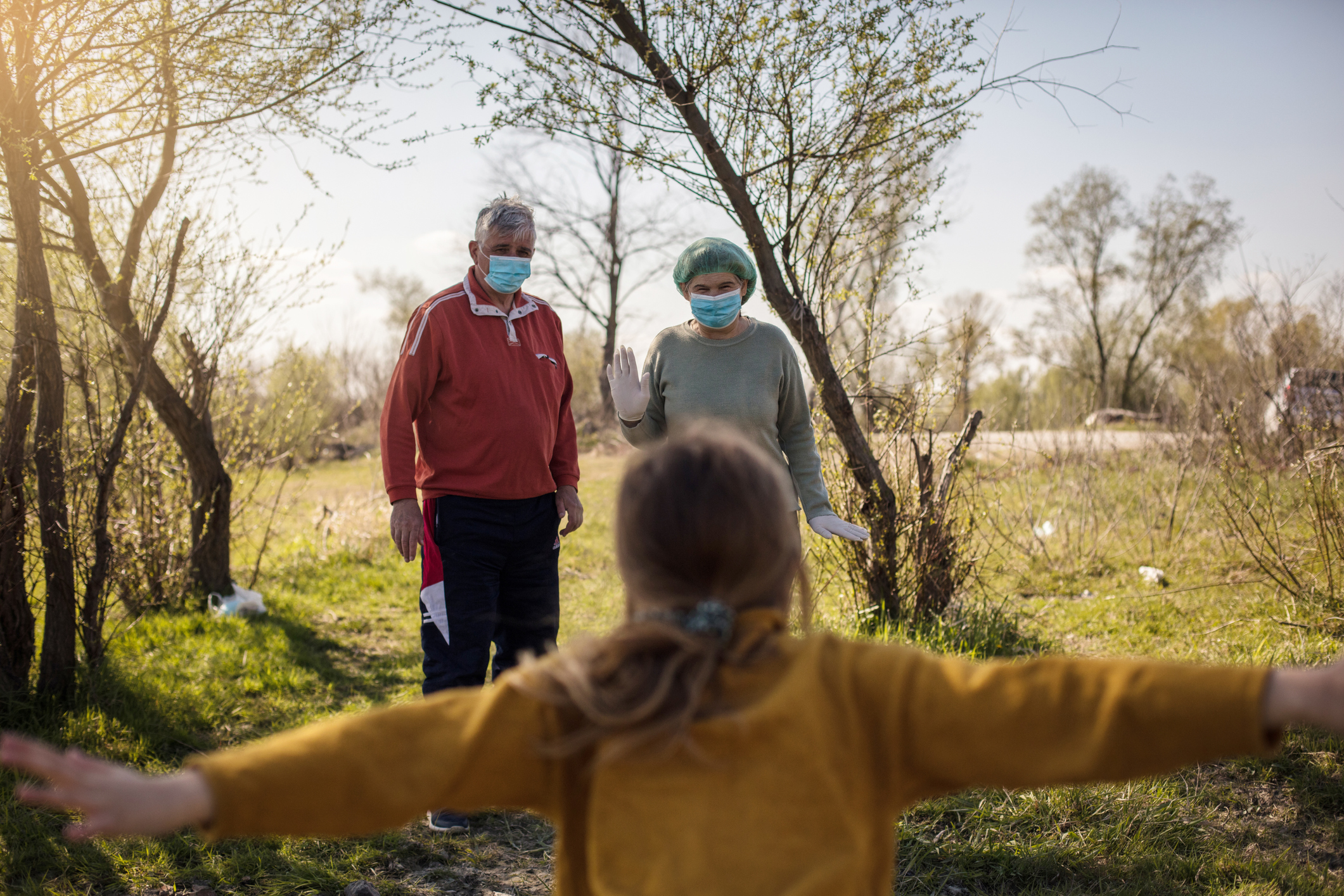
“Can I get a hug?”
It’s a simple question for a simple act that’s been especially missed because of COVID-19 distancing. “Human beings need social contact,” says Dr. Eugene Beresin, executive director of The Clay Center for Young Healthy Minds at Massachusetts General Hospital, and professor of psychiatry at Harvard Medical School. “We are not hermits. We are not solo pilots. We are pack animals.” Not that it needs more promotion, but along with feeling connected, a hug has been shown to help fight off a cold and help your mood when dealing with conflict.
But even as restrictions have started to loosen, there are no clear-cut answers on personal interactions between adults. Dr. Todd Ellerin is director of infectious diseases and vice chairman of the department of medicine at South Shore Hospital in Weymouth, Massachusetts, and an instructor in medicine at Harvard Medical School. He doesn’t recommend against giving a hug, but he’s also not giving it the green light.
The reality, he says, is there are no safety guarantees, just as it’s not, “You hug, you get the virus — it’s not that simple.” Like with all coronavirus issues, it’s about individuals making their own assessments about risk.
With a hug, it’s not the act itself that’s worrisome, but everything that comes with it. “It’s where you are and how close you’ll be standing. It’s what you’ll be doing before and after. The hug is not an isolated event.” Ellerin offers three factors to consider in order to determine whether it’s a safe choice for you.
People. Who’s involved? The more people who you’re going to hug, the higher the risk. The health of you and the others involved also matters. It’s not only whether someone has coronavirus symptoms, but anything that would compromise the immune system, like cancer, obesity, heart disease. And age is still a factor. People over 60 years old, even if healthy, are more vulnerable.
Place. Where would it happen? Outside is preferable, and lower risk than indoors.
Space. How close will you be after the hug? The six-foot zone — the approximate distance a droplet travels before it falls — is still a good prescription. And proximity can be an overlooked factor, since there’s the tendency to remain close and talk, and hugs often come with kissing. You’re certainly able to exchange words when you have a mask on. You just shouldn’t. Masks work, but they’re not perfect, so, in order to minimize the risk if you choose to hug, when you’re in close, you shouldn’t talk.
So what’s the ideal hug?
Ellerin says that it needs to be mutual, discussed, and pretty much planned. This is not the time for surprise or spontaneous shows of affection. You need to start at six feet away; if you’ve already been talking close to each other, you’ve increased the risk. You need to be masked and looking in opposite directions, so there’s no breathing or chance of coughing or sneezing on each other. Once the hug is over, you both back away to at least six feet without saying anything. If the hug makes someone cry, you don’t wipe away another person’s tears. And even though you should not have hand-to-hand contact, you want to wash your hands afterwards in order to maintain the habit. If you want to add an extra layer of protection, you can also wear a face shield.
The easier decision might be to say it’s not worth chancing, but in extreme cases, such as when a person is dying, the benefits might outweigh the consequences, Beresin says. These kinds of considerations reflect how COVID-19 has turned instinctive acts into calculations. “You need to be scientific about this, but it’s hard to be scientific about people you love. We’re not robots,” Ellerin says.
Maybe there’s another option
Beresin adds that rather than attempt to script a quick hug and still worry about the dangers, this is an opportunity to be creative, while being masked and at least six feet apart. You can listen to music. You can meditate with guided imagery. You can sit, maybe by a fire, and talk, maybe sharing a reminiscence about a great family vacation or a disastrous Thanksgiving that ended in laughs.
Recollecting, along with making eye contact and saying kind words, are ways to feel close and to be a reminder of how you got through something together. None of these alternatives are as immediate or physical as a hug, “but it does the same kinds of things. We can touch and embrace each other in many different ways,” Beresin says. “And in some respects, it could be better, because it lasts longer than 10 seconds.”
But with the hug, it goes back to the fact that the decision is up to each person. Ellerin says that until a widespread vaccine and treatments are available, “as individuals, we have to learn how to manage risks. It’s not an exact formula.”
For more information about the coronavirus and COVID-19, see the Harvard Health Publishing Coronavirus Resource Center.
